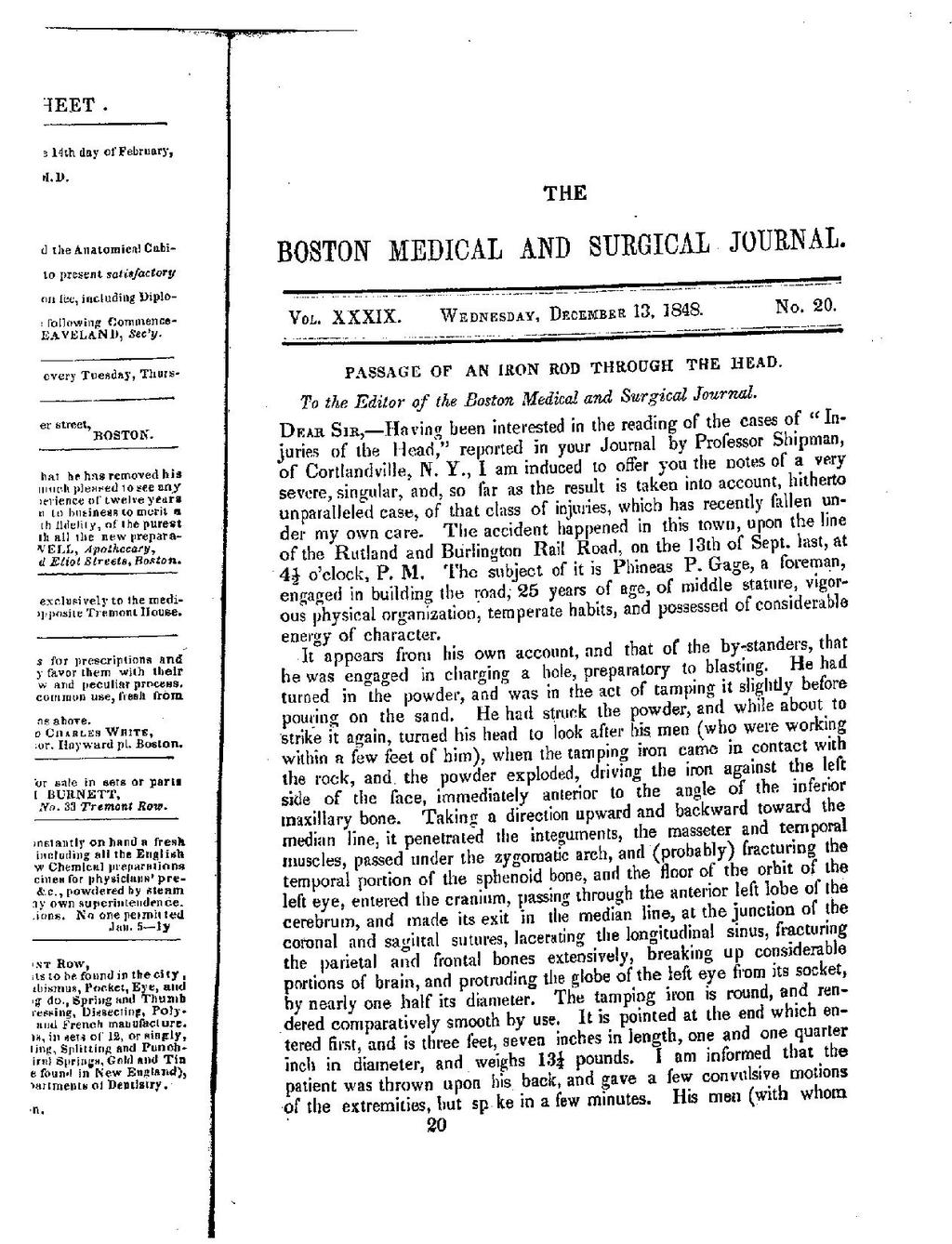THE
BOSTON MEDICAL AND SURGICAL JOURNAL
PASSAGE OF AN IRON ROD THROUGH THE HEAD
- To the Editor of the Boston Medical and Surgical Journal.
DEAR SIR,—Having been interested in the reading of the cases of "Injuries of the Head," reported in your Journal by Professor Shipman, of Cortlandville, N.Y., I am induced to offer you the notes of a very severe, singular, and, so far as the result is taken into account, hitherto unparalleled case, of that class of injuries, which has recently fallen under my own care. The accident happened in this town, upon the line of the Rutland and Burlington Rail Road, on the 13th of Sept. last, at 4½ o'clock, P.M. The subject of it is Phineas P. Gage, a foreman, engaged in building the road, 25 years of age, of middle stature, vigorous physical organization, temperate habits, and possessed of considerable energy of character.
It appears from his own account, and that of the by-standers, that he was engaged in charging a hole, preparatory to blasting. He had turned in the powder, and was in the act of tamping it slightly before pouring on the sand. He had struck the powder, and while about to strike it again, turned his head to look after his men (who were working within a few feet of him), when the tamping iron came in contact with the rock, and the powder exploded, driving the iron against the left side of the face, immediately anterior to the angle of the inferior maxillary bone. Taking a direction upward and backward toward the median line, it penetrated the integuments, the masseter and temporal muscles, passed under the zygomatic arch, and (probably) fracturing the temporal portion of the sphenoid bone, and the floor of the orbit of the left eye, entered the cranium, passing through the anterior left lobe of the cerebrum, and made its exit in the median line, at the junction of the coronal and sagittal sutures, lacerating the longitudinal sinus, fracturing the parietal and frontal bones extensively, breaking up considerable portions of brain, and protruding the globe of the left eye from its socket, by nearly one half its diameter. The tamping iron is round, and rendered comparatively smooth by use. It is pointed at the end which entered first, and is three feet, seven inches in length, one and one quarter inch in diameter, and weighs 13¼ pounds. I am informed that the patient was thrown upon his back, and gave a few convulsive motions of the extremities, but spoke in a few minutes. His men (with whom
20
